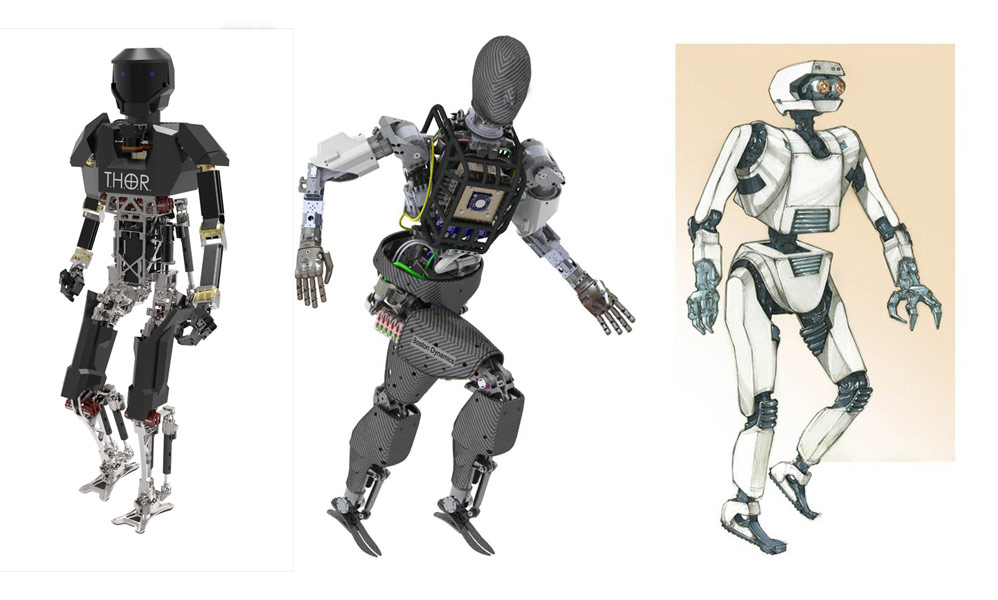DARPA Robotics Challenge: 8 Tricky Tasks

This week, 17 teams and their robot creations will descend on Florida to compete in an ambitious robotics competition.
The DARPA Robotics Challenge Trials are being held Friday and Saturday (Dec. 20–21) at the Homestead Miami Speedway in Homestead, Fla. The contest, which features teams from five different countries, is designed to foster the development of robots that could one day provide assistance following natural or manmade disasters.
DARPA, an arm of the U.S. Department of Defense responsible for developing new technologies for the military, will evaluate the performance of the robots on eight separate physical tasks. The challenges are intended to test the human operators and the robots' autonomous decision-making, perception, mobility, strength and dexterity. [Images: DARPA Robotics Challenge]
Here are the eight tasks that will be on display at the DARPA Robotics Challenge:
Task 1 – Vehicle
A course will be set up to test the robots' ability to navigate a vehicle around a series of pylons. This task will require the robot to drive through the course, demonstrating that it can operate an accelerator and rotate a steering wheel. At the finish line, the robot must show that it can get out of the vehicle and move through a designated end zone.
Task 2 – Terrain
Get the Space.com Newsletter
Breaking space news, the latest updates on rocket launches, skywatching events and more!
This task will have three components that evaluate the robots' ability to traverse different types of terrain. First, the robots will move over a series of ramps, before tackling two piles of blocks that are designed to mimic ground that is littered with debris.
The blocks will not be fastened to the ground, so the robots will have to demonstrate that they can handle shifting terrain.
Task 3 – Ladder
For this task, the robots will climb an 8-foot-high (2.4 meters) ladder. Points will be awarded based on the number of steps the robot ascends. The robot does not need to descend the ladder, and will be lowered to the ground by DARPA officials, if needed.
Task 4 – Debris
To demonstrate their dexterity and mobility, the robots will be required to remove five pieces of debris from their path. According to DARPA officials, no part of the cleared debris may touch the floor inside a rectangle formed by a doorway and a designated start line, to demonstrate the robot's level of control in manipulating the unwanted debris.
An additional point will be awarded for robots that remove five more pieces of debris from the area. Next, the robots will travel through an open doorway, which has no threshold. The task will be considered complete when the individual robot has crossed a line marked on the ground beyond the door.
Task 5 – Door
The robots must demonstrate three different ways of opening a door: pushing open a door, entering a door by pulling it open, and then pulling open and entering a door that is weighted to close. [Images: Cutting-Edge Robots]
The three parts of the "door task" must be completed in the above order. None of the doors will have a threshold, and this part of the challenge will take place on a flat surface, according to DARPA officials.
Task 6 – Wall
Next, the robots will demonstrate their ability to operate within a disaster environment. The robots will be required to cut through 1/2-inch-thick (1.2 centimeters) drywall, and then remove a triangular piece from the wall.
There will be no obstructions on or behind the wall where the robots will be operating. The task will evaluate the robots' ability to cut exclusively within a green-colored area. There are also no limits to the order or number of cuts necessary to remove the triangular-shaped piece of drywall.
Task 7 – Valve
To show off their robotic dexterity, the competitors will next close a series of valves that control airflow in pipes. The robots will close three valves in any order, and the task will be deemed complete when the air stops flowing through the pipes.
Being able to complete this type of task could one day prove useful in disaster situations, when robots are capable of completing tasks that are deemed too risky or dangerous for humans. For instance, DARPA officials have said, robots could have been helpful in the aftermath of the March 2011 earthquake and tsunami that struck Japan, which caused radioactive water to leak from the stricken Fukushima nuclear plant.
Task 8 – Hose
In their final task the robots will operate a hose. The robots will begin behind a start line, move toward a hose, and then demonstrate the ability to grasp and unreel it. Next, the robots will touch the end of the hose to a separate component, showing they can make physical contact between two objects. Finally, the robots will attach the hose nozzle to the connecting component. There is no requirement on the number of turns necessary to make the connection, but the task will only be deemed complete if the hose end remains in contact with the separate component, unsupported by the robot.
Follow Denise Chow on Twitter @denisechow. Follow LiveScience @livescience, Facebook & Google+. Original article on LiveScience.
Join our Space Forums to keep talking space on the latest missions, night sky and more! And if you have a news tip, correction or comment, let us know at: community@space.com.

Denise Chow is a former Space.com staff writer who then worked as assistant managing editor at Live Science before moving to NBC News as a science reporter, where she focuses on general science and climate change. She spent two years with Space.com, writing about rocket launches and covering NASA's final three space shuttle missions, before joining the Live Science team in 2013. A Canadian transplant, Denise has a bachelor's degree from the University of Toronto, and a master's degree in journalism from New York University. At NBC News, Denise covers general science and climate change.










